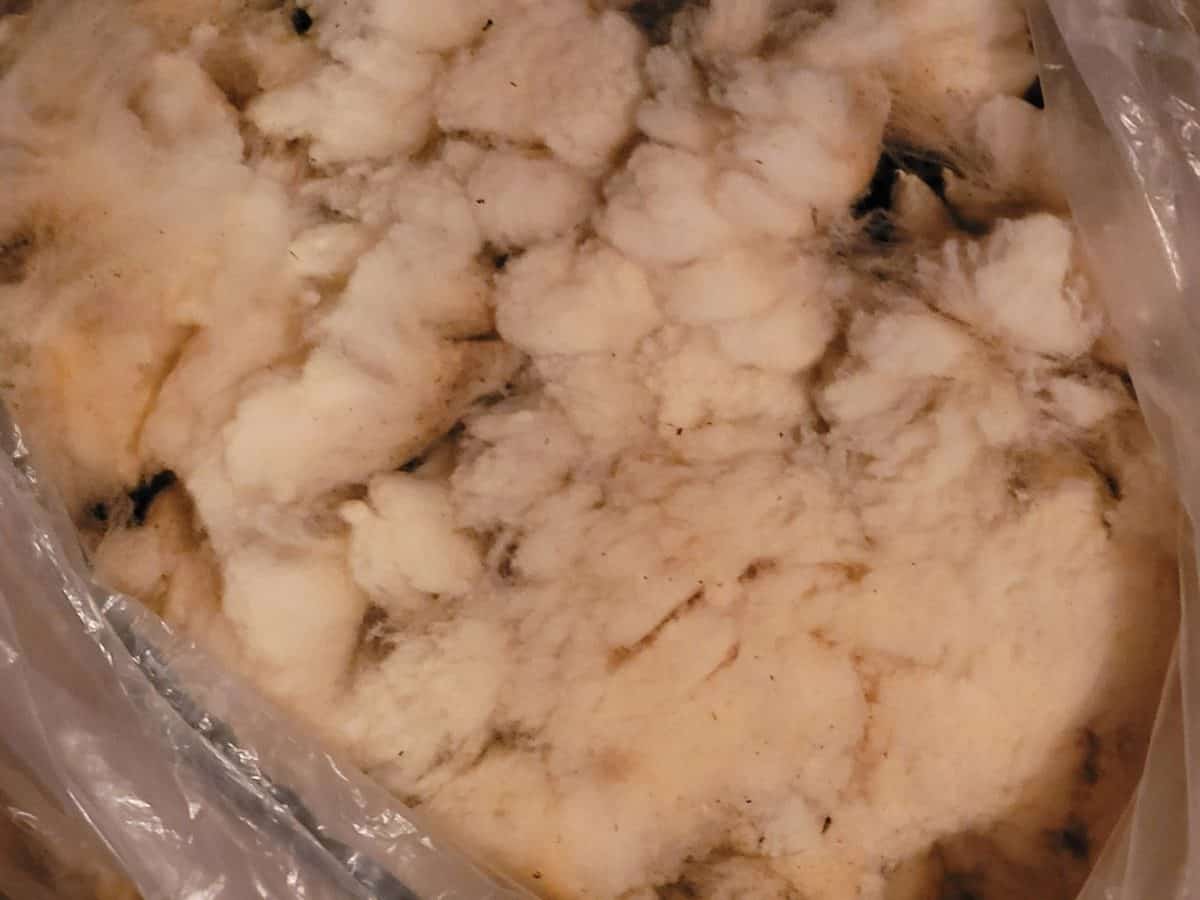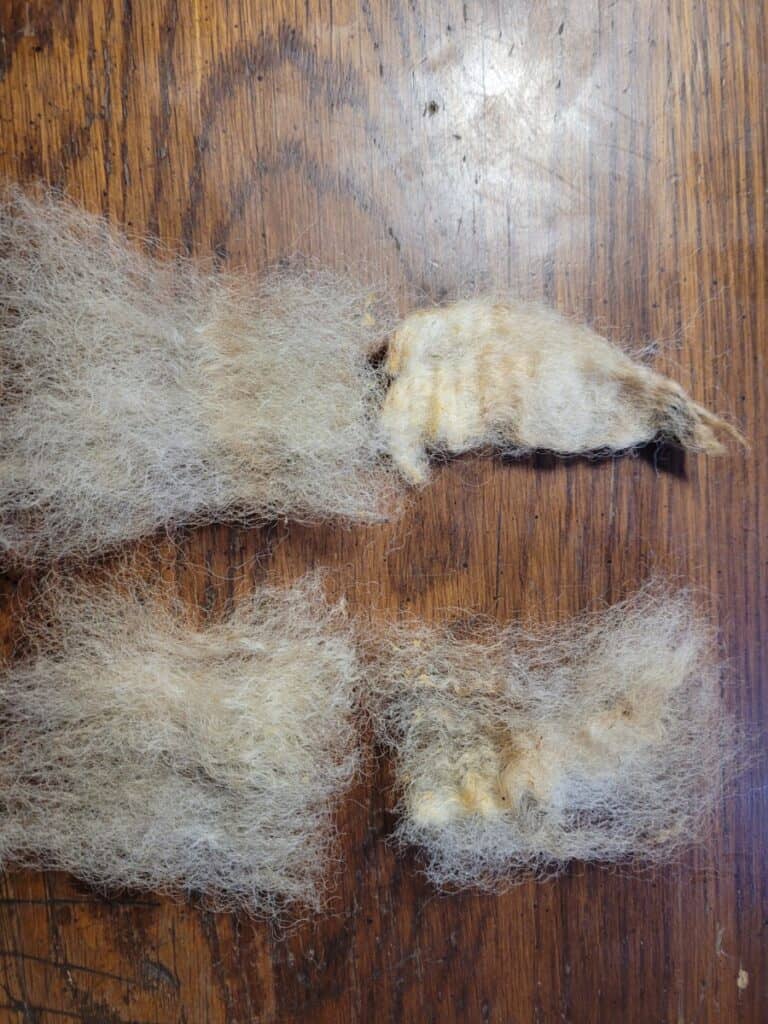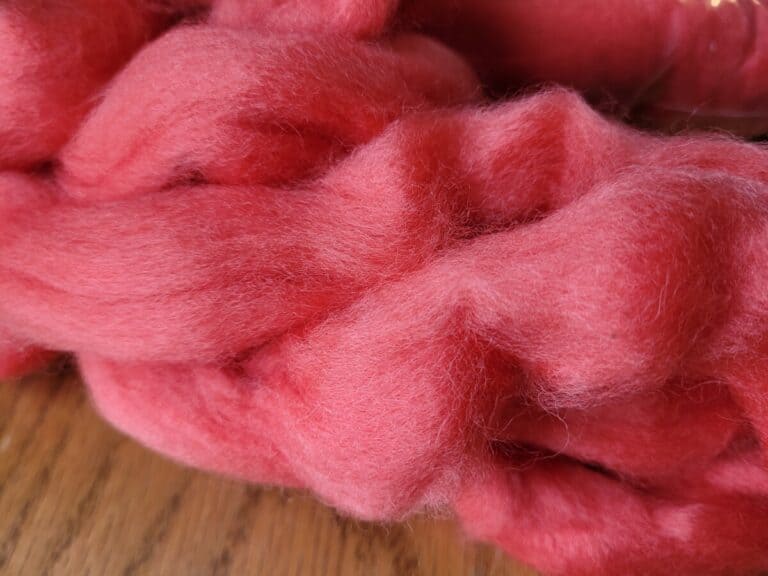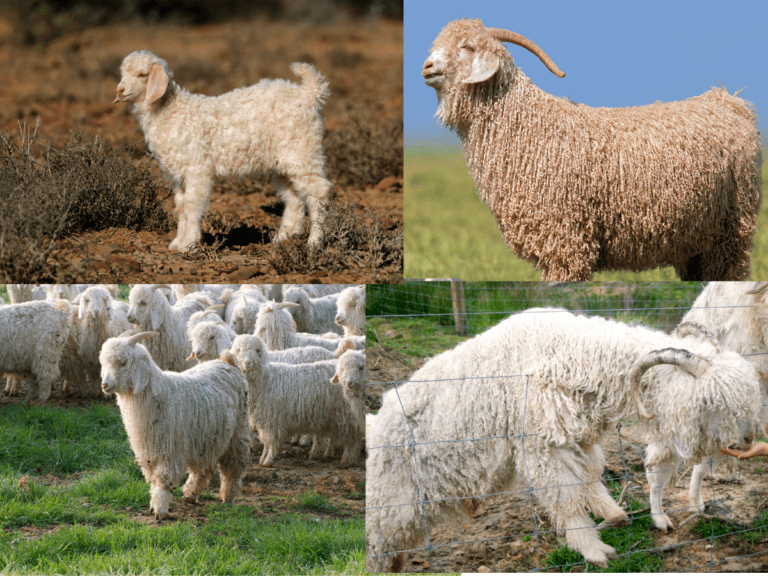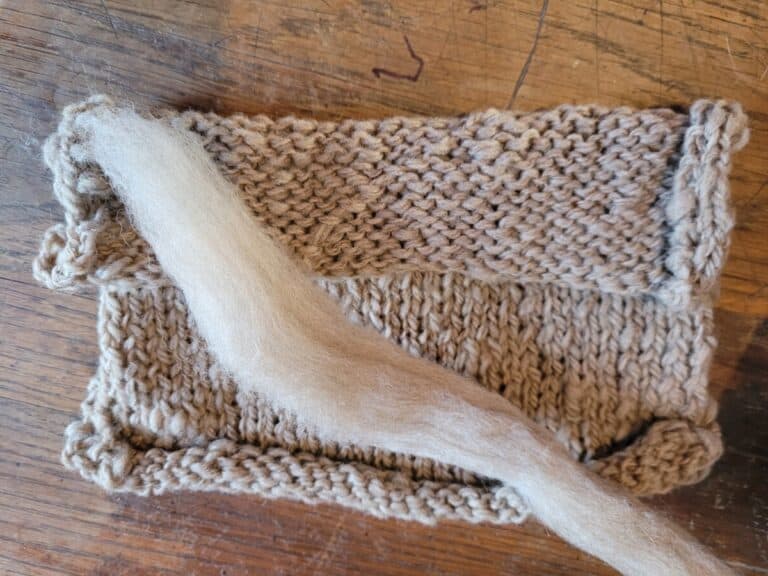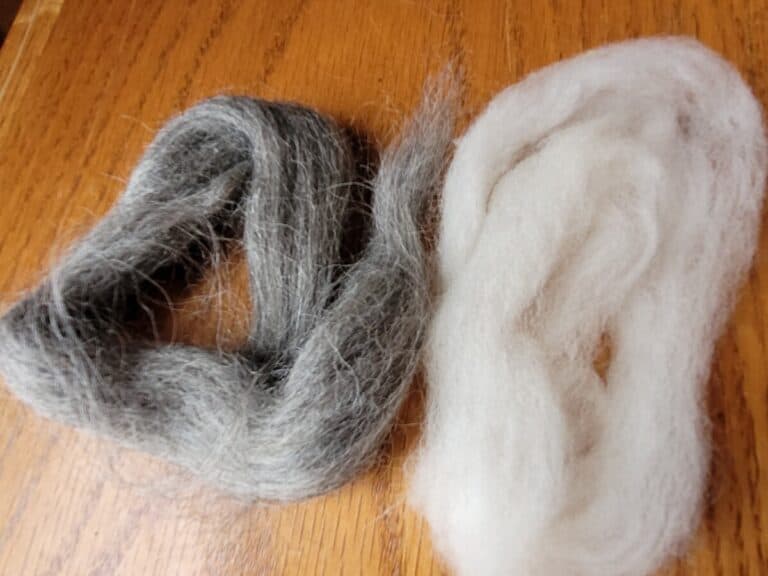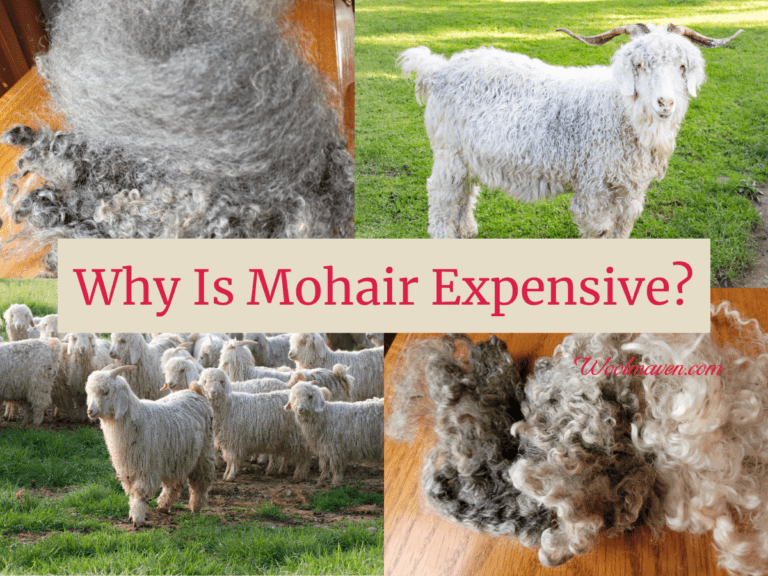What Is A Raw Wool Fleece? (And should you buy one?)
You’ve seen the raw wool fleeces available for online and at fiber festivals and sales and have probably wondered if you should jump in and buy a raw fleece or just admire them and stick to the prepared fibers you love.
Is a raw wool fleece the right choice for you and what is involved with getting and using a raw fleece, anyway?
When buying a raw fleece, you get more spinnable fiber for your money and can increase the number of breed specific wools and/or colors available to you, however all of the fiber preparation, including washing and carding or combing is up to you.
Cost To Spin Wool goes over your costs of spinning versus buying wool yarn.
What is a raw wool fleece?
A raw wool fleece is an unwashed fleece that has been skirted (usually) then bagged and sent to the new owner.
There has been no processing done on the wool, it comes to you just like it was on the sheep.
The raw fleece will have lanolin and possibly vegetable matter
The raw fleece will still have all of the lanolin in it, that was naturally produced by the sheep, plus any vegetable matter (VM), like hay chaff, that the sheep may have picked up over the year.
Some shepherds will coat their sheep, meaning these sheep wear a coat to keep the VM out of their wool, while other shepherds just try to manage the flock to keep VM contamination of the fleece as low as possible.
If you have only worked with processed wool, before the wool gets to you the processor has taken out the lanolin and dirt by scouring then removed any VM buy carding or combing.
When you buy a raw fleece, these steps are up to you. VM amount will vary greatly, from none to a lot!
Lanolin will be in the wool until you wash it out, with finer wools tending to have more lanolin than medium or long wools.
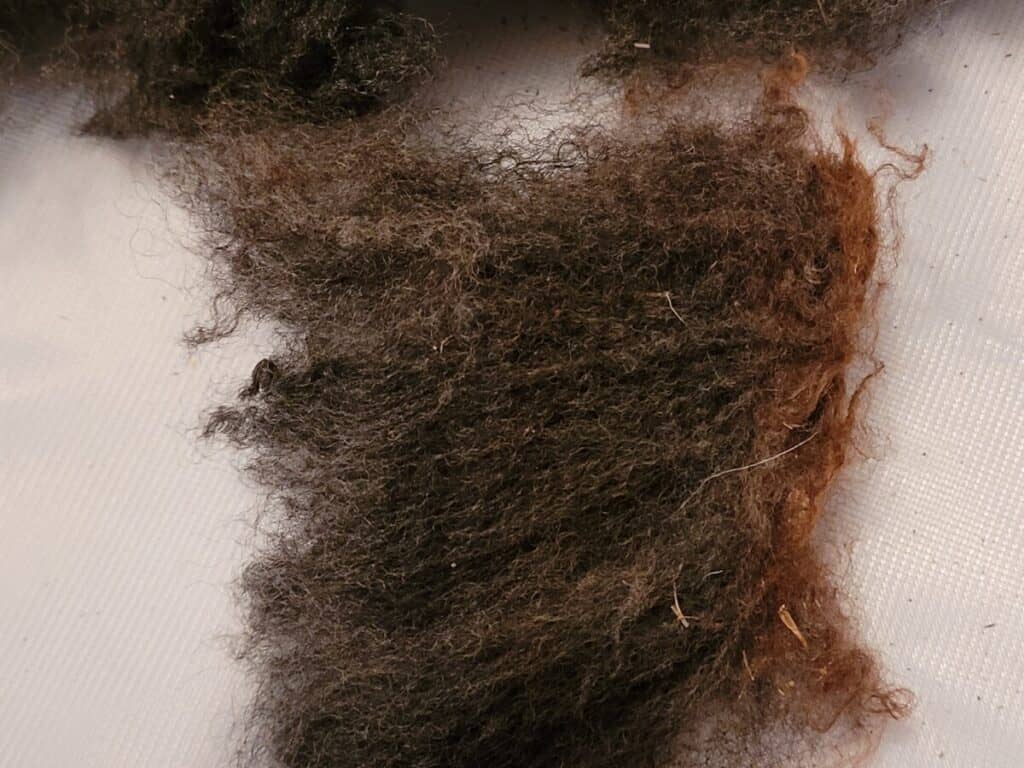
Why buy a raw wool fleece?
I like to work with raw fleeces. To me, a raw fleece get me the most wool for my money and gives me plenty of fiber to experiment with to see how each fleece works for me.
That’s a big key here, how you and your spinning fit the properties of the fleece and then how that all fits together with the end project that you’ll be making.
Here’s a success story: I bought some naturally colored shetland, multiple fleeces over a few years from the same farm. All beautiful fleeces, all super easy to work with and spun and knit really well for me.
This wool and I just seem to really work well together. Shetland is a win for me!
Advantages of buying a raw wool fleece:
- directly support farm
- choose individual sheep
- know how raised
- get better price per pound
- make own fiber prep decisions
- do fiber prep your way
If you enjoy the fiber prep and are looking to spin something with a bit more character than roving or top, raw fleeces are a fun way to expand your spinning.
Plus, you get to turn the fiber into anything you want it to be, rather than just getting to choose from the commercially available options.
Disadvantages of buying a raw wool fleece:
- smaller selection
- variability of fleeces and service
- you buy a whole fleece and might not like it
- fiber prep is all you!
Here’s another story: I bought some beautifully colored BFL (blue faced leicester) wool to try out. Spun up wonderfully for me, really easy to work with.
But….anything I knit with it (I like to make hats) just grew bigger and bigger!
Now I understand the issue, I used a wool that has little to no spring and lots of shine to knit something that needed spring to bounce back to shape. I picked the wrong wool for the job!
The BFL would have been wonderful with anything that needs to drape, like a scarf, or could have been mixed with a bouncier wool to make those hats. (I do have a “thing” for making hats!)
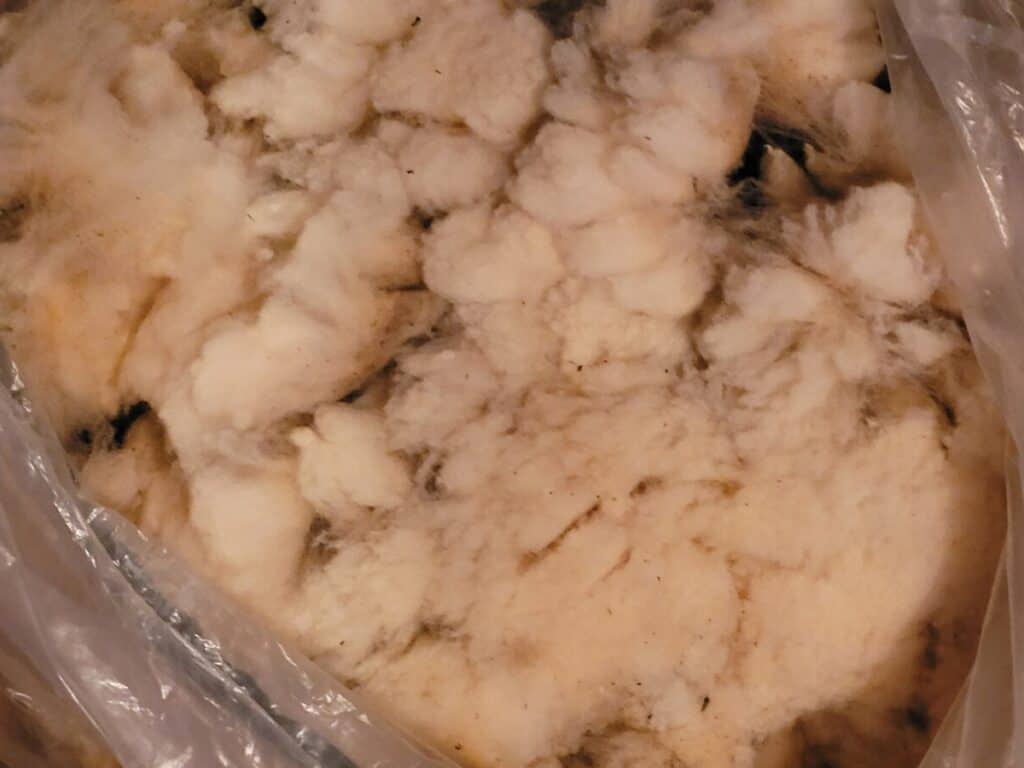
Fleeces vary within the breed
In case you are not aware of it, there can be considerable variation between individual sheep, even of the same breed.
You can get a fleece that you love, followed by a fleece that just isn’t what you are looking for-from the same flock!
This is where there is really no substitute for buying the fleece in person if at all possible! Go to that fiber festival and touch the fleeces!
Second best is to email the fleece seller and tell her what you are looking for and the types of wool you like to spin.
She knows her stock and will be able to tell you if fleeces from her animals will match your needs.
Is a raw wool fleece good for beginners?
If you are a well started beginner, meaning you can spin well enough to get the yarn to hold together, you just need more practice, then a raw fleece might be a great way to get you more wool to practice on for a lower price per pound.
Of course, you would have to be willing to do the fiber prep yourself, but some folks enjoy that, I do.
If you are a rank beginner, you will be better served using something that is easier for you to manipulate, I’d go with a corriedale combed top or a pencil roving.
It will be easier to learn on a prepared fiber, since it will be consistent.
Once you get a bit of practice and you are to the point that you just need to practice more, so you need more wool to work with, then consider stepping up to an entire fleece.
Is a raw wool fleece expensive?
The price of a raw wool fleece varies significantly with the different breeds, the condition of the wool and the color of the wool.
If you just want a pretty normal fleece from a more common breed, raw wool is not expensive to get. I normally see fleeces selling for $50-120 at fiber festivals.
For example: $50 for a 5 pound fleece is $10 per pound while $120 for a 9 pound fleece is $13.33 per pound.
Another example: I’m considering purchasing a CVM (California Variegated Mutant) fleece that is $113 for slightly more than 6 pounds.
The fleece is raw, so I’ll loose 30% or so with washing, so that takes me to just about 4 pounds of washed fiber, which ends up at $28.25 a pound.
I’m on the fence about it, the color is lovely and when I think about it I have been spending that much for other wool, just in smaller packages, more like 4-8 ounces at a time rather than 4 pounds.
But…those other wools come already prepared for me, I just spin them. These are all things to consider when you are figuring out if buying raw wool is a good plan for you or not.
Unusual breeds and colors sell fast
Some breeds and crossbreds have a wonderful range of natural colors and get sold out early, sometimes a year ahead!
Other folks just have nice sheep fleeces and offer them up for anyone who wants to prep their own fiber.
Search “raw wool fleece for sale” and you’ll see the current sellers.
What do you do with the raw wool fleece once you get it?
Once you get the fleece, you now have to decide what you are going to do with it, meaning do you plan on washing the fleece or are you going to try spinning “in the grease” (unwashed)?
Of course, this is your option, but generally finer wools are washed and the medium to long wools are the ones you can spin unwashed, if you want to.
How To Get Raw Fleece Ready For Spinning goes over the things you can do to make spinning in the grease easier!
I tend to spin unwashed medium wools with little to no prep. This means I just separate out the locks and tease the ends a bit and spin, no carding.
This works because I don’t mind the lanolin and I tend to spin worsted.
If you want to spin woolen or are using a fine wool, you’ll want to wash the fleece, first, then prep it to spin.
To wash the fleece you have two options, you can wash the whole thing at once or wash a pound or so at a time.
If you are new to washing fleeces go with the smaller amount first and use a mesh laundry bag, especially if you have a feltable wool!
How To Wash Raw Wool shows you how to wash your wool, if you decide that you want to.
I have even read about spinners washing the wool one lock at a time, interesting idea and would work great for small areas, since you’ll need to spread the washed partial fleece or locks out to dry.
It will take more space than you think!
I have tried washing an entire fleece, it usually takes forever to dry (it tends to be humid here) and I end up frustrated.
I have successfully washed partial fleeces, this tends to be my go to plan if I want to wash some wool for carding.
Classic Carder has a nice short article on Preparing Fleece, with an accompanying video. This site has quite a few nice articles and videos and sell their own drum carders.

